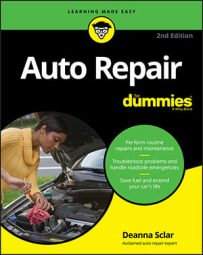Most drivers can expect their clutches to last 40,000 to 60,000 miles, but if you maintain your clutch properly, it can be good for the life of your vehicle, depending on the type of vehicle you drive and how you drive it.
Most newer vehicles with manual transmissions have self-adjusting clutches that require no adjustment, but if you have an older model without self-adjustment, you can cut down on the wear on your clutch disk by keeping your clutch pedal properly adjusted.Your clutch pedal should move down three-quarters of an inch to 1 inch without effort and then require a good deal more effort to travel the rest of the way down to the floor. This pedal free-play ensures that when you release the pedal, the clutch disk is fully engaged.
Too much pedal free-play isn’t good, because too much pedal travel is used up doing nothing: There’s not enough movement left at the bottom of its travel to compress the clutch springs and allow the engine flywheel and the clutch disk to separate. With this excessive pedal play, the gears clash whenever you shift into First or Reverse from a stopped position.
If there’s no pedal free-play on your clutch pedal, another problem can occur, even if there’s enough play to allow the clutch disk to engage. In this case, the throwout bearing, which responds to pressure on the clutch pedal by causing the disk to disengage, may go on spinning. If the throwout bearing is allowed to revolve constantly in this way, it will wear out, which makes getting into or out of gear difficult.Don’t ride the clutch. Riding it can wear out the throwout bearing, too. You can tell that something is wrong because the bearing makes whirring, whining sounds. If the sounds disappear when you release the clutch pedal and resume when you step on it, you have a bad throwout bearing. If you think that you have one, or if your clutch misbehaves in other ways, go to a reliable mechanic and have the clutch checked out.
If you have a clutch disk replaced, have the entire clutch checked at that time to be sure that other parts aren’t going to need work soon. Here’s what should probably be done in each case:-
If the flywheel is worn, have a professional resurface it. This procedure involves grinding it down to a new, flat surface and then polishing it to a mirror-like finish. If you fail to have this work done, the worn flywheel can wear out the facing of the new clutch disk very quickly. And if you’ve already had the disk replaced, chances are that it managed to score the flywheel by the time you recognized the trouble signs and had the disk attended to.
-
If the pressure plate is excessively worn, scored, or glazed; or if the springs on the pressure plate become loose, you should have them replaced, as well.
You also can have the pilot bearing (located where the crankshaft meets the flywheel) checked then, too, which saves you money on labor charges by eliminating the necessity of getting into your clutch and putting it back together a second time.

